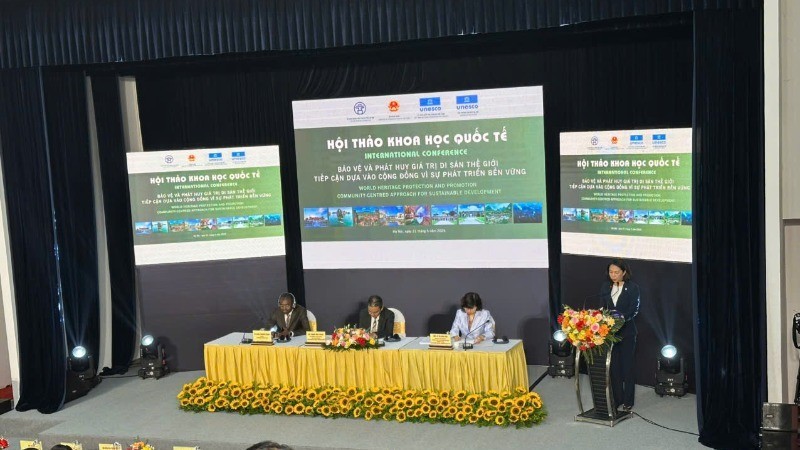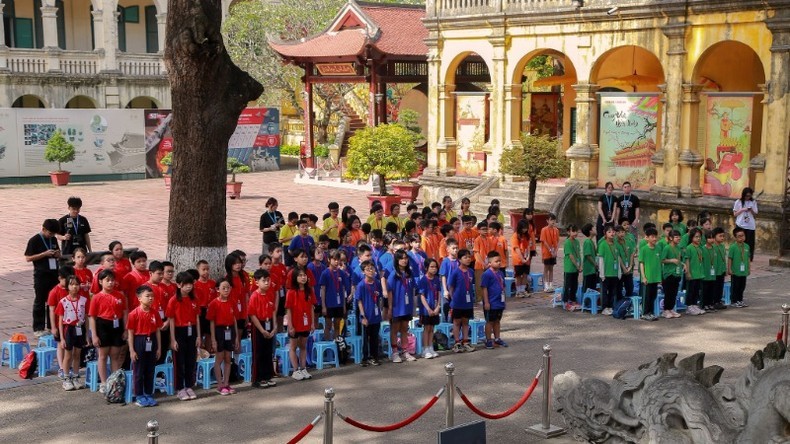On May 21, an international scientific workshop entitled “Safeguarding and Promoting the Value of World Heritage: A Community-Based Approach for Sustainable Development” took place at the Thang Long Imperial Citadel World Heritage Site in Ha Noi.

Vu Thu Ha, Vice Chairwoman of the Ha Noi People’s Committee, speaks at the workshop.
The event, co-organised by the Ministry of Foreign Affairs and the Viet Nam National Commission for UNESCO, the UNESCO Office in Viet Nam and the Ha Noi People’s Committee, was attended by Lazare Eloundou Assomo, Director of UNESCO’s World Heritage Centre.
The workshop is part of a series of activities under the Action Plan for the 2021–2025 period of the Viet Nam National Commission for UNESCO and the Viet Nam–UNESCO Cooperation Memorandum of Understanding in 2021–2025.
According to Jonathan Baker, Chief Representative of the UNESCO Office in Viet Nam, local communities are not only beneficiaries of heritage conservation efforts but also key stakeholders and custodians of heritage values.
A community-based approach means enabling local people to participate in decision-making processes, organising cultural activities, and benefiting economically and socially from heritage-related initiatives. This ensures long-term sustainability as well as local economic development.

Heritage education activities at the Thang Long Imperial Citadel.
Viet Nam currently has eight cultural and natural sites recognised by UNESCO as World Heritage Sites. All of them are effectively protected and promoted. In 2024, these eight World Heritage Sites welcomed approximately 14.9 million visitors.
On November 23, 2024, the National Assembly passed the Law on Cultural Heritage, contributing to institutionalising the Party and State’s policies on heritage. The Government is preparing three Decrees to concretise issues raised in the Law.
In terms of management, protection and value promotion, Viet Nam has, over the years, created favourable conditions for local people to engage proactively in the process through various forms.
For example, the Thang Long Imperial Citadel has become a venue for a wide range of educational and experiential student activities.
In Hoi An, residents receive financial support to restore and preserve historic houses. Meanwhile, in Ha Long Bay, cultural values and traditional practices of communities living within the heritage area have been integrated into tourism development.
In Phong Nha–Ke Bang, local people are paid for their involvement in forest protection and are allowed to harvest certain forest products for livelihood purposes.
At the workshop, participants shared experiences from the perspectives of state management and heritage ownership in leveraging the value of World Heritage for local socio-economic development and improving people's livelihoods.